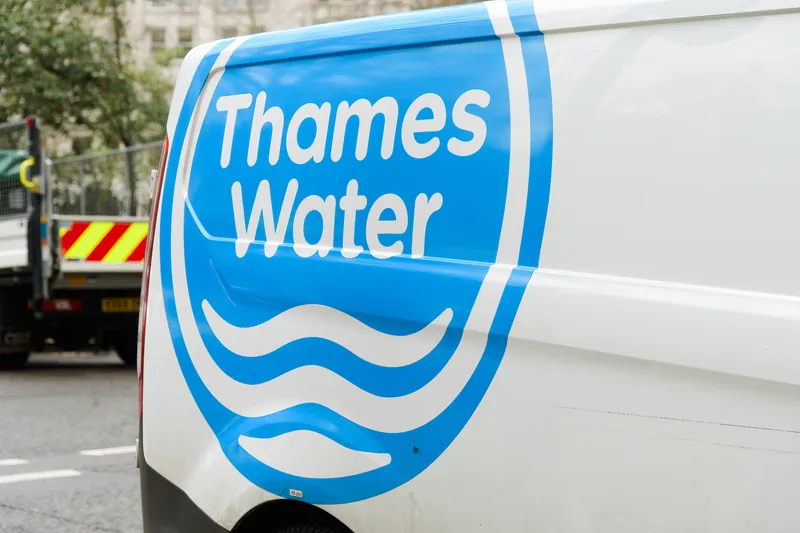To RAB or not to RAB
Thames Water has cast a shadow over the privatised utility sector as public lobbying from the various interests involved in the saga escalates up to the time Ofwat has to decide the latest five-year pricing increase next month. The strength of the sector until now has been the regulated asset base (RAB) model, which allowed utilities to raise cheap debt within an investment-grade environment. But you could say that has been a weakness in the sector too.

Why? Because when you allow private but regulated and ultra safe companies to raise cheap debt, guess what? They raise cheap debt and they keep raising cheap debt until you stop them. Now, in the case of Thames clearly it went overboard on the financial engineering front but water regulator Ofwat and investors such as Omers and USS felt at some point that was OK when they looked at their financial models. Have higher interest rates hit these calculations? Yes, and inflation too, but most of the debt is long term and these factors should have been contained.
The fact is that the Water Act, which governs the sector, provided the debtholders with the comfort they needed to keep loading on debt. The Acts says water companies can finance 100% of their regulated asset value (RAV). Thames and its holdco owner Kemble got to 90%.
The RAB model has benefits. Ofwat CEO David Black said last year "if we go right back to the start of privatisation [in 1989], the sector asset base was £9bn and it was fully financed by equity at that point. Today, the sector asset base is around £85bn and debt levels are around £57bn. Of that growth in the asset base of £77bn since privatisation, £57bn has been financed by debt and about £20bn from equity."
Since privatisation, £190bn has been invested, he said. In the next five-year period, a whopping £96bn will be invested.
The problem with the RAB model is that it can be a loose structure – unlike project finance, which is asset specific – as an RAB depends on a corporate company-wide management approach. But in order to justify the cheap debt pricing, good management is required as well as a sharp CFO.
The RAB has become the tool of choice for funding infrastructure since the private finance initiative (PFI) became toxic. Back in 2009, Dieter "RAB" Helm and Goldman Sachs banker James Wardlaw called for "RABing" across infrastructure. In a report they said "there is a significant difference between the costs of capital under different regulatory regimes. Private finance initiative [PFI] projects have turned out to have relatively high costs of capital, whereas price-capped RAB networks have had much lower costs of capital."
Luckily, on the Hinkley Point C nuclear power station project, the government chose a strike price formula over a RAB model, otherwise this project's big cost overruns would soon, well not so soon, be heading the way of power customers and their bills. On a strike price model the developer takes project risks, under a RAB approach new assets are transferred into the RAB at cost.
A tighter RAB approach has proven merits – ironically on the £4bn Thames Tideway Tunnel scheme in London, the project that needed a structured-finance approach given Thames was carrying too much debt a decade ago to fund the project. The scheme is near complete and while costs have gone up it has done well during a challenging construction environment.
I guess it helped that it was structured by a bunch of project financiers. And now Thames has this week suggested a deliverability assessment mechanism (DAM), that is it would spend £1.9bn on capex in return for a specific £19 increase in average bills over the next five years. Ofwat might worry, however, that this idea would set an unwelcome precedent across the water sector. Thames Tideway has a RAB structure but this is outside Thames Water, not inside.
The trick appears to be how to marry loose regulation within an investment-grade framework and some performance targets – the old way, ie, let the companies run their own affairs – with a tighter more micro-managed regulatory approach. But the less debt you raise, the more expensive the cost of financing. The old PFI route might have been more expensive than RABing, according to Helm, but it had a 90/10 debt/equity split with the debt "cheap as chips" as one banker famously remarked – a quote I repeated and then got into trouble with his head office.
The noise over Thames Water is important – as the water utility serving a major global city it is a bellwether for global privatised utilities. The fate of the shareholders in holdco company Kemble appears to be dire, while the opco Thames Water Utilities Ltd carries on seeking a regulatory settlement with Ofwat and maybe after that, new investors. If Kemble withdraws, could Thames Water carry on as an opco? Maybe beyond the next election....






